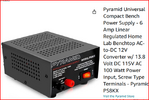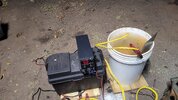I read in another thread here about using electrolysis to remove rust from metal parts. I believe I understand the process but I have a couple of questions.
How large a piece of sacrificial metal do I need? Does it need to be as big or have roughly as much surface area as the piece that I'm de-rusting? I assume it needs to conduct electricity and not be painted etc. Does it matter if it is already rusted? What exactly does happen to the sacrificial metal, is it pitted or corroded in some way?
I don't really want to use one of my computerized battery chargers for this purpose. I think this would freak it out. I'd rather buy a very simple old school 12-volt battery charger at Harbor Freight or something. Does anybody know what kind of current is required, would a little battery tender type thing work?
How large a piece of sacrificial metal do I need? Does it need to be as big or have roughly as much surface area as the piece that I'm de-rusting? I assume it needs to conduct electricity and not be painted etc. Does it matter if it is already rusted? What exactly does happen to the sacrificial metal, is it pitted or corroded in some way?
I don't really want to use one of my computerized battery chargers for this purpose. I think this would freak it out. I'd rather buy a very simple old school 12-volt battery charger at Harbor Freight or something. Does anybody know what kind of current is required, would a little battery tender type thing work?






